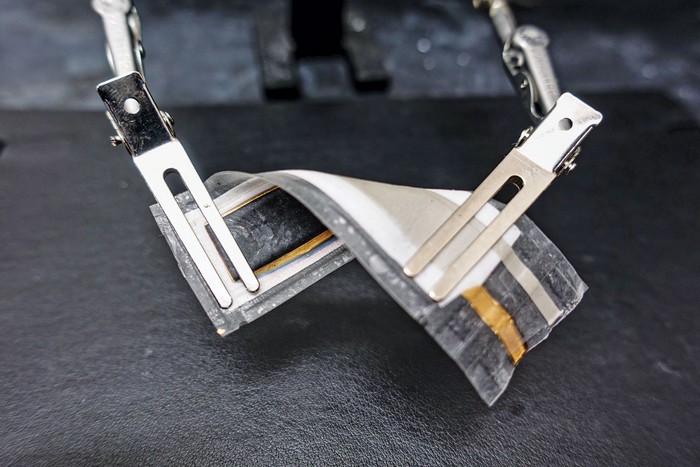
In today’s fast-paced world, electronic devices have become integral to our daily lives. From smartphones to wearable gadgets, these devices rely heavily on batteries to provide the power needed for their operation. As technology continues to evolve, there is a growing demand for efficient, long-lasting and flexible batteries to meet the demands of modern electronics. This has led to the rise of flexible batteries, which offer a range of benefits and possibilities for the future.
Understanding Flexible Batteries
As the name suggests, flexible batteries can be bent, twisted, and folded without losing functionality. Unlike traditional rigid batteries, which are bulky and have fixed shapes, flexible batteries are made from thin, lightweight materials that allow greater flexibility and versatility in their design and application. These batteries are typically made using advanced materials such as polymers, nanomaterials, and thin films, making them flexible and efficient in storing and delivering energy.

The Benefits
The rise of flexible batteries has opened new possibilities for various industries, including consumer electronics, healthcare, and wearable technology. Here are some of the key benefits offered by flexible batteries:
- Design Flexibility: Batteries can be easily integrated into various devices, regardless of shape or size. This allows for greater design flexibility and opens new possibilities for developing innovative and compact electronic devices.
- Improved Performance: These batteries are often more efficient and have higher energy density than traditional batteries. This means they can provide more power while taking up less space, allowing for longer-lasting and more powerful devices.
- Enhanced Safety: Batteries are designed with safety in mind. They are less prone to leakage or explosion, making them a safer option for various applications.
- Increased Durability: Batteries are built to withstand bending, twisting, and other forms of mechanical stress. This makes them more durable and reliable, especially in applications where devices are subjected to constant movement or deformation.
- Environmental Friendliness: Many flexible batteries use environmentally friendly materials and manufacturing processes. This makes them a more sustainable alternative to traditional batteries, which often contain harmful chemicals and metals.
Applications
Flexible batteries have a wide range of applications across various industries. Here are some of the critical areas where these batteries are being used or have the potential to be used in the future:
Consumer Electronics

Flexible batteries are already used in consumer electronics such as smartphones, smartwatches, and fitness trackers. These batteries allow for thinner and lighter devices, providing a better user experience. We can expect these batteries in foldable smartphones, flexible displays, and wearable devices to seamlessly integrate into clothing or accessories.
Healthcare and Medical Devices
These batteries have great potential in healthcare and medical devices. They can power implantable medical devices such as pacemakers, drug delivery systems, and biosensors. The flexible nature of these batteries allows for more comfortable and unobtrusive devices, improving the overall patient experience.
Wearable Technology
The rise of wearable technology has created a demand for flexible batteries that can be integrated into clothing, fitness bands, and other wearable devices. These batteries can provide power for tracking fitness data, monitoring health conditions, and even powering flexible displays.

Internet of Things (IoT)
As the Internet of Things continues to grow, there is a need for small, lightweight, and flexible batteries that can power the vast network of interconnected devices. The batteries can provide energy for sensors, smart home devices, and other IoT applications.
Energy Storage
These batteries also have the potential to revolutionize energy storage. They can be used in flexible solar panels, allowing easier integration into surfaces such as roofs, windows, and clothing. This opens new possibilities for renewable energy generation and storage.
Challenges and Future Outlook
While flexible batteries offer numerous benefits and possibilities, some challenges must be addressed. Some of the key challenges include:
- Energy Density: Batteries still have lower energy density than traditional batteries, limiting their use in high-power applications. Researchers are actively working on improving the energy density of these batteries to overcome this limitation.
- Manufacturing Processes: The manufacturing processes for these batteries are still in the early stages of development and can be complex and costly. As the demand for flexible batteries continues to grow, advancements in manufacturing techniques are expected to drive down costs and increase production efficiency.
- Safety: Although flexible batteries are generally safe, they are still needed to ensure long-term stability and safety, especially when subjected to extreme conditions or mechanical stress. Ongoing research aims to address these safety concerns and improve the overall reliability of these batteries.
Despite these challenges, the outlook for flexible batteries is promising. As technology advances, we expect further improvements in these battery performances, durability, and cost-effectiveness. This will open new opportunities for innovation and for developing even more advanced and flexible electronic devices.
Conclusion
The rise of flexible batteries is transforming the world of electronics, offering new possibilities for design, performance, and sustainability. These batteries are revolutionizing various industries, from consumer electronics to healthcare and energy storage. With ongoing advancements in materials, manufacturing processes, and safety, the potential for flexible batteries is only beginning to be realized. As more research and development efforts are dedicated to this field, we expect to see even more innovative applications and breakthroughs. Flexible batteries are unlocking the potential for a new generation of electronic devices that are powerful, efficient and adaptable to the needs of our ever-changing world.
